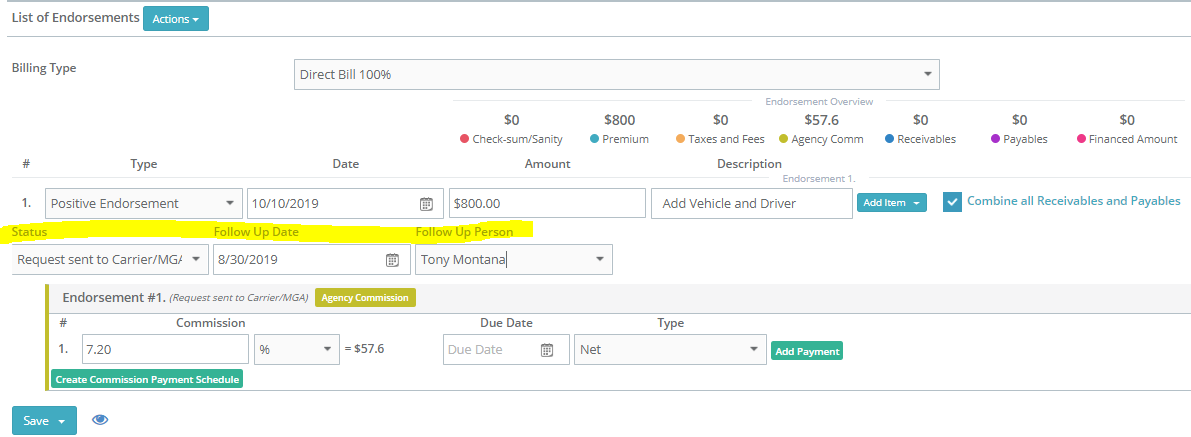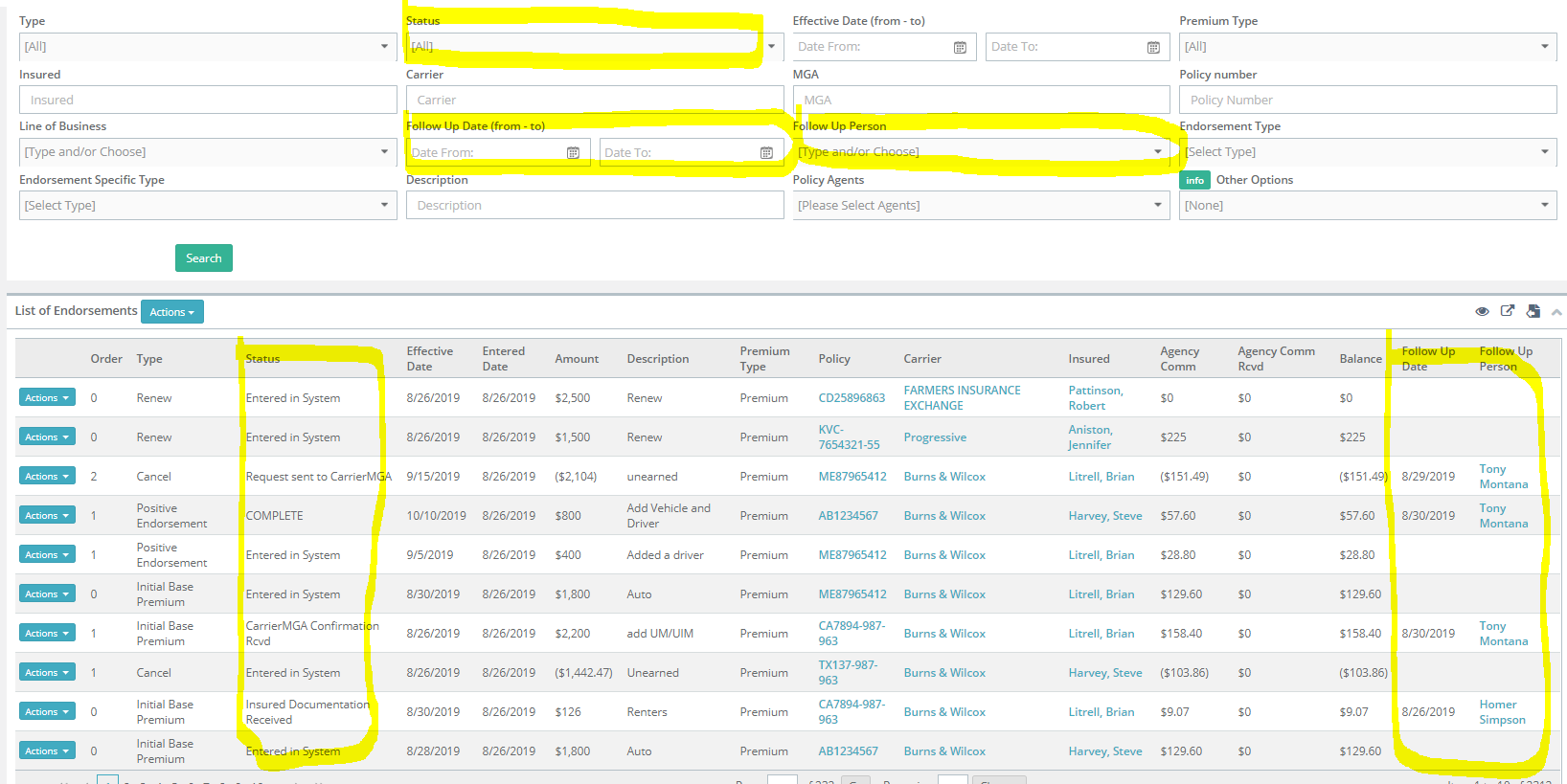Tools to Manage Workflow
PrintMomentum AMS offers a plethora of tools to help users manage their workflow and to help agencies manage their workload to stay on top of production and support.
On the navigation menu, you have your "Tasks," "Activity reminders," "To-do list," "Opportunities," "Service requests," "Endorsement status," "Upcoming renewals," "Important dates," "User messages/notifications," etc.
With so many tools and resources, it's not surprising that new users often ask us: "what are the differences between tools?" and "what tools do I need to/should use?"
There isn't one single correct answer. It depends on your unique work habits and responsibilities. Users with various work habits and responsibilities find certain tools to be more effective and helpful than others for managing their workflow. Below are brief descriptions of the various tools and resources on your navigation menu that should help you decide what tools are best suited for your needs and work style.
There isn't one single correct answer. It depends on your unique work habits and responsibilities. Users with various work habits and responsibilities find certain tools to be more effective and helpful than others for managing their workflow.Tasks
When do we use "Tasks"?
Tasks are the primary (and most popular) mode of distributing and keeping track of workflow, especially in agencies with multiple users who have defined roles. Tasks are exactly what they sound like. Tasks can be customized to create a standardized workflow that all agents can use.
This can be done by going to "Miscellaneous" on the navigation menu. Then, "Agency Customization," "Tasks," and finally "Categories and Stages". As an example, you could create the category "Renewal." The first "stage" may be to contact the insured. The descriptions for stages would be instructions. In this example, the instructions might be to review coverages and insured items with the insured. Your next stage may be to collect loss runs, then maybe prepare applications, and etc.
If a stage is not necessary, it can be marked as such in the task it was created in. Each stage can be updated with regards to status. Notes/comments can be added to the tasks/stages as things progress, so there is a trackable history of what was done and when.
Remember, if you assign a task to an agent, that agent can only mark that task as "done". They will need to reassign it to the task's creator to have it marked as "complete" and removed from the agent's list of open tasks. This is by design. The hope is that the task's creator will be able to review the task as necessary and view what was done to complete it to give them peace of mind that the task was indeed completed. This also provides them with the opportunity to discover lessons worth teaching to help agents progress and learn from each other.

To-Do List
A to-do list is a simple one-and-done check-off list designed to remind you to do basic tasks. Everyday examples include: take out the trash, cancel my gym membership, & renew my driver's license.
Think of your Momentum AMS' to-do list as a long term wish list (e.g. "I need to change the oil in my Maserati"). This to-do list is not commonly used for daily workflow management.

Opportunities
Opportunities are a commonly used tool in CRM systems. Opportunities are designed to manage sales and track production. These are new sales opportunities, cross-sell, and even renewals.
You may ask: "how do opportunities relate to prospects?" and "wouldn’t they be opportunities as well?"
Well, a prospect can have multiple opportunities. Think of a prospect as the insured and the opportunity as the prospect's policy. (Opportunity --> Quote --> Policy)
An insured can have an opportunity, too--- a cross-sell. Some agencies consider renewals as opportunities as well (especially in commercial lines).
Opportunities can also be a valuable tool for tracking quote-to-bind ratios for agents and to determine the value of a certain referral source. It is good to know if a referral is valuable and worth paying for.

Activity Reminders
Often used alongside "Tasks," "Activity Reminders" are the most popular tool for managing workflow.
You may be pondering: "how do 'Activity Reminders' differ from 'To-Do’s'?"
You may be pondering: "how do 'Activity Reminders' differ from 'To-Do’s'?"Instead of a long term list of tasks to complete, Activity Reminders are calendar events. Users often think of the Activity Reminders list as their daily "to-do list." Activity Reminders are also called "Suspenses" in other systems. This page should be the first one users view when they log in every morning.
When properly used, Activity Reminders will notify the user what they need to be working on that day. When creating reminders, you are able to select to receive an email as an additional method of being notified that you have something to do or work on.
The "To-Do List" is designed to be more of a "wish list" while "Activity Reminders" is a list of work items that need to be completed. Unlike "To-Do's," "Activity Reminders" are date sensitive.

Important Dates
"Important Dates" is a user-defined checklist of items that need to be completed with each new policy (or renewal). You can define templates for "New Personal Auto," "Renewal BOP", etc. and have a checklist of things that need to be completed.
Example:
1. Collect e-signed application
2. Collect down-payment
3. Collect finance agreement
4. Send welcome email (or, trigger drip campaign)
5. etc.
"Important Dates" can be an invaluable tool to manage new policies and cut back E&O exposure.
On your navigation menu, go to "Miscellaneous" --> "Agency Customization" --> "Important Dates" to define your "Important Dates" templates.

Endorsement Status
"Endorsement Status" is a powerful tool designed to help keep track of endorsements and ensure that nothing "falls through the cracks."
On your navigation menu, go to "Miscellaneous" --> "Endorsements" --> "Endorsements/Fees/Taxes"
As you enter "Endorsements," there is an option to choose a stage or a status. You can also select a follow-up date and a follow-up person.

Then, you can use the "Endorsements" table and its filters to keep track of the status of various endorsements.

The Momentum AMS staff hopes that this brief overview of workflow management tools has provided enough information to encourage you to explore these options and decide which ones match your work responsibilities and preferences.
Please keep in mind that with several options to customize and combine elements of these tools, you have the potential to create powerful workflow management processes.
